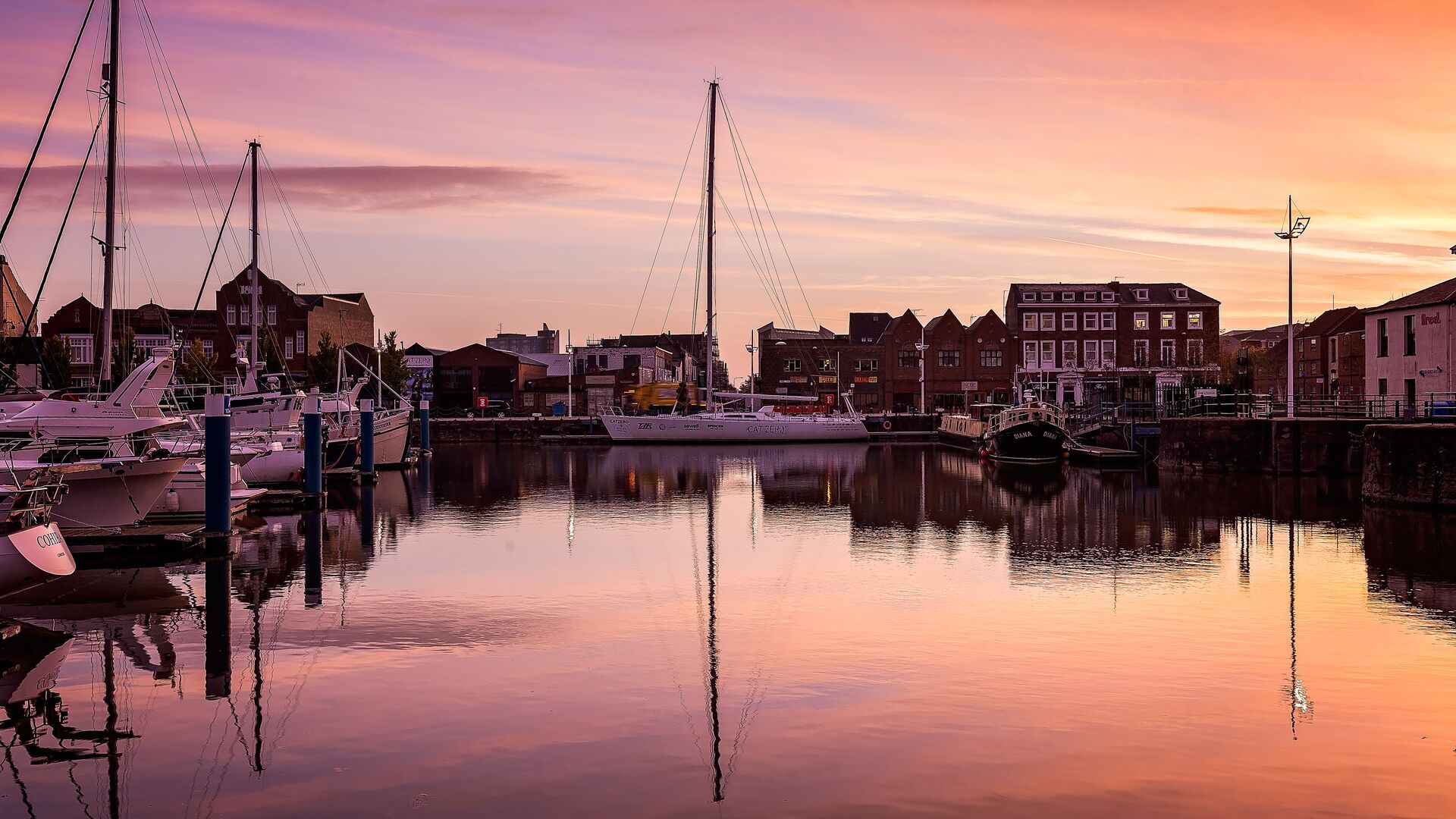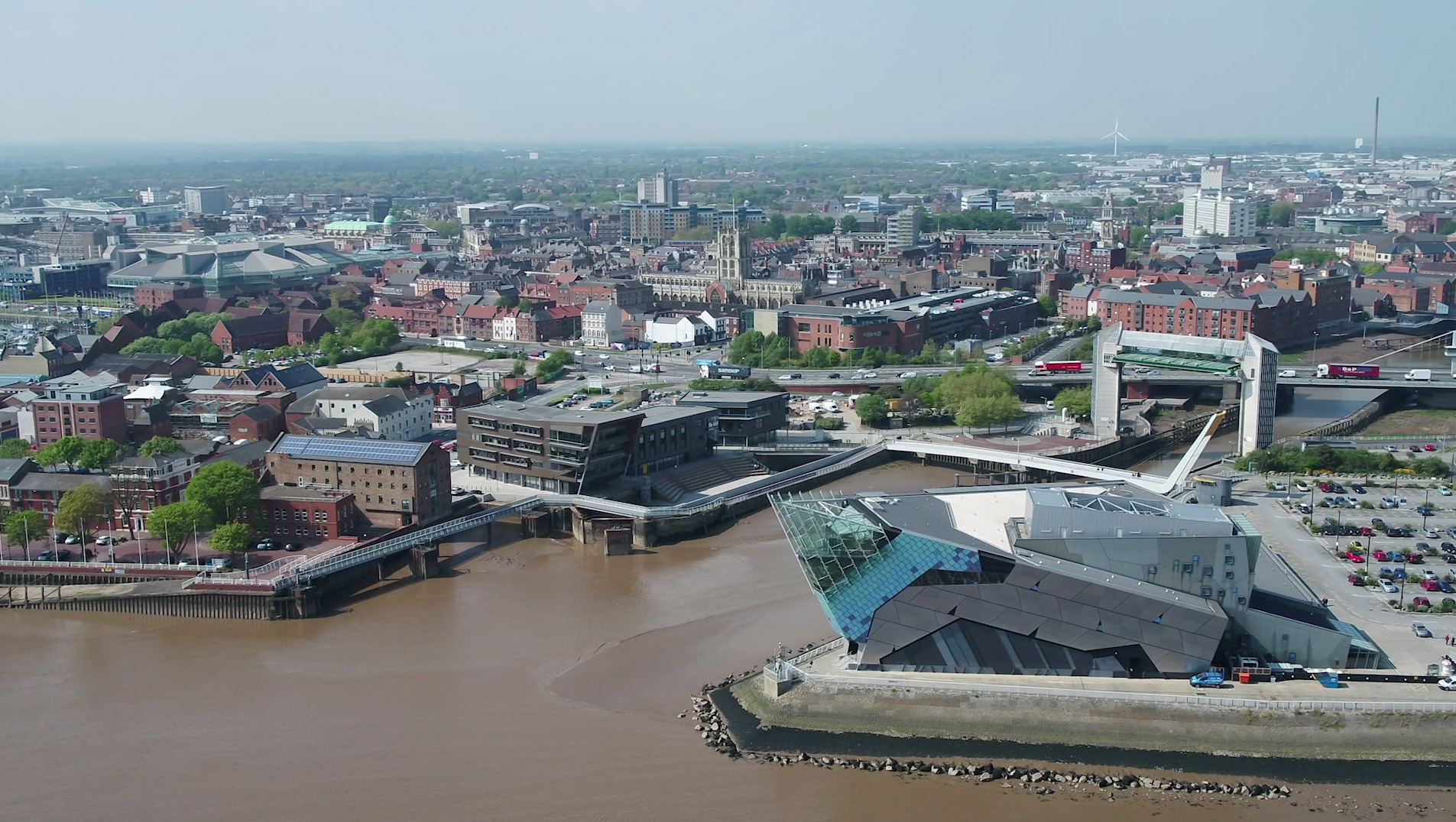Living with Water
Multiple partners from the Living with Water (Hull and Haltemprice) describe some of their work to improve community resilience to flooding, which is an increasingly high risk impact of climate change.
What is the Living with Water partnership?
The Living with Water programme has, for the first time, brought together the private and public-sector partners charged with monitoring, managing and alleviating flood risks into a collaborative partnership. Living with Water (Hull and Haltemprice) is a unique voluntary partnership between Yorkshire Water, Hull City Council, East Riding of Yorkshire Council and the Environment Agency which came together following the flood of 2007 that affected over 8,000 residents and properties in Hull.
Why was a new approach to flood risk needed in East Riding and Hull?
The combination of topography, geography and an interconnected drainage system makes Hull unique in terms of flood risk, from multiple sources. In the Hull and Haltemprice area of East Riding the water all has to flow through the city to discharge to the Humber. It does this through a series of conduits such as main rivers, ordinary watercourses and the sewers, all organisations having separate responsibilities through the partnership for managing these.
This is one of the most flood prone places in the country, and also includes areas of deprivation. Nearly 80% of residents in the East Riding and 97% of residents in the city of Hull are at one or more sources of flood risk, which also affects businesses. This area faces a uniquely complex set of demographic and geographic challenges. The risk will continue to increase with the impacts of climate change.
Lee Pitcher, General Manager, Living with Water, “Water does not respect political or organisational boundaries, so we need to work together to address a catchment solution to become resilient for the future.”
There has been £200million investment in the flood infrastructure over the last 10 years, with 8250 Homes protected through completed flood resilience projects up to 2020.
Whilst this has reduced the risk by reducing the probability of a flood, the consequences can still occur if there is a breach, overtop or mechanical failure. In addition, sudden intense rainfall can cause surface water flooding.
Because a considerable risk still remains, Yorkshire Water resourced a specific team to concentrate on the Hull and Haltemprice area in terms of targeted engagement to support future investment in infrastructure and to change behaviours.
Why did your work focus on communities and people?
If communities at risk of flooding have a low level of personal resilience the damage, both physically to buildings and possessions and mentally, will be worse. So, there also needs to be investment in supporting people to develop adaptable resilient behaviours to manage and “live with water”. Individual measures can range from simple steps such as signing up for warnings and having plans to minimise damage, to retrofitting sustainable drainage in your garden and installing property flood resilience. An example of this is fitting air brick covers.
We also recognised that messaging around water in the past, particularly flood risk, has not been successful. Communities have assumed it is someone else’s problem to deal with, rather than face the fact that our climate is changing, and we all need to adapt.
Rachel Glossop, Hull City Council, describes a key learning point from this work, “We will only be able to adapt and cope with the water challenges we face if we truly learn to “live with water,” managing it instead of fighting nature.”
What helps to make this collaborative partnership work effectively?
We have established a stringent programme governance model which facilitates a safe, coordinated and dynamic approach. This ranges from board level vision and partnership resources through to peripatetic multi-disciplinary technical professionals’ meetings.
Excellent collaboration and sharing of resources and information are central, with performance measures and data exchange integrated throughout. Although data sharing has been one of the most difficult elements to achieve, we now have cross organisation key performance indicators. For example, around engagement, we have touch points on social media, quality training and education, adopted infrastructure and hectares of surface water attenuated.
Patience and persistence. True collaboration is hard and takes effort and lots of work!
What are some examples of your targeted engagement with the public?
Focusing specifically on flood resilience measures, we have delivered over 1000 education hours in the form of primary (KS2) school lessons and assemblies, which combine practical activities with key messages around planning and preparing for flooding. In addition, we have provided 385 training hours with the voluntary sector.
We have also created a dedicated website and a flood CPR (check, prepare, respond) campaign.
Prior to the pandemic, we attended various community events across the region to talk to the public about our vision and hear their thoughts on flooding resilience too.
Living with Water achieved great success in innovatively engaging public in mass participation events such as the 2018 Hulltimate-Challenge. This was the UK’s first city-centre water themed urban obstacle course, with discreet messaging and flood alleviation themes embedded throughout. Many thousands of local residents were directly involved in the activities, and over 1 million people were reached through social media.
How difficult has it been to change resident behaviour?
As with all behaviour change, it is very difficult. Behaviour change does not happen overnight and so we need to continue the conversation with communities at risk and work with them to build resilience together in a positive proactive way.
The National Flood and Coastal Erosion Strategy highlights the need for behaviour change, which needs a commitment to revenue alongside the delivery of a capital programme.
What new research has the University of Hull conducted?
Our first major activity in 2018 was a survey 450 households in three flood affected areas of Hull, to fill gaps in information about community flood resilience and build a baseline on which action could be planned.
There was a high level of response to our 2018 survey of 450 households in three flood affected areas of Hull. Many people were very keen to help us to fill gaps in information about community flood resilience by voicing and sharing their experiences and views on possible improvements. It was the first time that many people had been asked about their experiences and opinions and there was an intrinsic sense of value in being listened to and that the LWW partnership would use the survey results to take action.
Dr Sam Ramsden, Flood Resilience Research Associate described the response to the survey, “Respondents who had been flooded described the feelings of helplessness, the devastation and the impacts on themselves and their families. While the different flood defences had made many people feel safer, respondents also wanted advice and support to take action themselves. For example, respondents wanted to protect their properties but didn't know what measures would be effective and whether they could afford them. It was great to discuss the results to the Living with Water partners, who were keen to respond to the findings”.
How have survey results helped to develop community resilience?
In direct response to the findings of the research, leaflets have been provided with key information for residents. In addition, Hull City Council have made a Flood Risk Officer available to the public, to deal with direct enquiries relating to flood risk and resilience.
The research has already encouraged the implementation of measures to improve residents’ flood resilience, such as giving access to information about flood insurance cover, property flood resilience measures, emergency flood kits and the benefits of having a household flood plan. There has been an increase in flood warning sign up since the targeted engagement started.
What can we expect to see in the future?
The aspiration of the Living With Water partnership is to create a city that thrives with water and key to achieving this is the introduction of sustainable solutions that manage water visibly on the surface. The long-term ambition of LWW is to deliver a holistic solution that balances blue-green and grey infrastructure to manage surface water in the city. The optimal solution for the communities that live here is one which is co-developed and co-delivered.







